|
Trade show “season” is upon us and, once again, tabletop exhibitors are reminded that the impression their booth creates is critical to how their brand is perceived. And, we also know that the people we have working in our booth are critical to the overall brand impression we make. Those first impression happen super-quick. So, exactly how long does it take to create those all-important initial brand impressions?
Is it within the first minute or so? Maybe, the first 5 minutes? Or…maybe its much, much quicker – maybe even in seconds? Here’s a link to an article from the Association of Psychological Science that says it might be far quicker than you thought: How many seconds to a first impression?
0 Comments
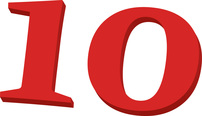 For many brands, trade shows offer the most valuable marketing opportunities they have all year. However, with the extensive initiatives and expenses that accumulate in preparation, as well as the fact that your competitors will be in your direct vicinity, making sure you have properly prepared yourself, as well as your brand, is beyond crucial. Author Ryan Parker from Parker White has 10 great thoughts on how to break through the crowd and stand out at your next trade show. We especially like #10....waaay to often overlooked in our opinion. Here's the link: https://www.parkerwhite.com/insights/10-ways-to-rise-above-the-noise-at-your-next-trade-show/www.parkerwhite.com/insights/10-ways-to-rise-above-the-noise-at-your-next-trade-show/ 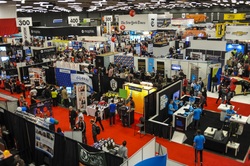 Now that the winter trade show season is underway, it’s a great time to consider how we evaluate the various industry trade shows we participate in. Too often, we fall back on the traditional methods of simply counting the number of leads generated, or simply we subjectively assess how we “felt” about the show in terms of lead quality or show traffic while we were there. While these are certainly important, we’d like to offer a five other areas for consideration when evaluating the return on participating in a particular show: 1. Overall Industry Health While at any trade show, you will have many first-hand opportunities to assess and get a feel for the overall health of your particular industry. This type of general sense of well-being can’t be obtained through reading industry published facts and figures. Speaking informally to industry executives – both other exhibitors and attendees - is a great way to understand who is doing well, what sectors of your industry are non-performing, and the general direction that our industry is headed. 2. Industry Connections Trade shows also offer a unique and unmatched opportunity to meet other industry executives – from competitor companies and potential customers - that you will never meet as you go through your normal everyday routine of conducting your business. Think about how many of your current relationships began as a simply meeting in the aisle at a trade show – or at a hotel watering hole - years ago. We're firm believers in the idea that when like-minded people get together, great things can happen. Attending and exhibiting at a trade show is a great place to meet like-minded people. 3. Unique Strategic Partnerships If you are an exhibitor, there can be no better way to showcase how your company might be the perfect partner for another exhibitor. At the just completed IHMRS Show, I know of at least two exhibitors that began discussions with another exhibitor that will likely conclude in new and exciting distribution opportunities with another exhibitor company. In addition, several other exhibiting companies who were sponsoring speaker sessions are now in discussions with those speakers (who they did not know before the show) on how they might work together going forward to each other’s benefit. These opportunities only came about because they attended and exhibited ….and, then, became involved in what was happening at the show. 4. Referrals At the same show, we personally met several industry consulting experts who are responsible for specifying tabletop products within the hospitality industry. Upon learning that they had clients who had needs in certain tabletop categories, we were able to bring them together in a “top to top” situation with exhibitors who could clearly meet those needs. This saved the consultants substantial amounts of time and gave the exhibitors introductions that might have taken years to happen. These types of introduction opportunities can only happen at a trade show. Because they were exhibiting, the supplier companies were able to truly show how their products could be of benefit to the consultants’ client needs. 5. Content Development We know of a number of exhibitors who utilize their exhibiting at trade shows to develop specific brand content. Using both photo and video content, these companies create rich content that will be used on the company website, through their various social media platforms, and through their collateral materials….all giving value that will last long after the trade show has ended. So…as former exhibitors to many industry trade shows, we clearly understand that the number of and the quality of leads that get generated is one of the important criteria that we should consider. However, there are also many other benefits – both tangible and intangible - that can be gained by exhibiting and attending trade shows. But, like most things in life, opportunity presents itself most often to those who are looking for it….with their eyes and their minds wide open. 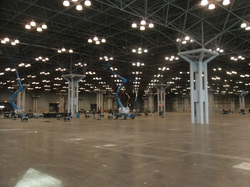 Early planning is key to tradeshow success. Early planning is key to tradeshow success. Planning on exhibiting at trade shows this Fall? Here’s some points to consider to help insure you have a successful show.....after all, now is the time to be thinking of what it is you are trying to achieve. 1. Understand WHY you are exhibiting at this particular show. Having a game plan of why you’re going and what, specifically, you are hoping to accomplish at this particular show is important as it lays the foundation to much of the rest of what you will want to be doing. Will you be launching new products? Introducing new personnel or systems? Maybe, you’ve updated your logo or done some other brand updates you want to introduce? In short, whatever you’re hoping to accomplish by attending the show in a few months should drive how you plan now. 2. Lay the groundwork to be successful Now is the time to be re-doing graphics, updating your pre-show invite list, getting the new collateral materials printed, etc. to make sure that you are communicating the proper message to all who visit your booth during the show. Too often, our day-to-day business activities make us put off these things until last minute and, inevitably, balls get dropped. So, make your to-do list (if you haven’t already) and begin checking things off one by one. 3. People, People, People We’ve told you before that research show that 85% of your success at trade shows is determined by the people you have in your booth…so make sure you have the right people working in your booth AND make sure they are fully prepared. From top to bottom, everyone is your organization is a Brand Ambassador. Make sure everyone understands that and remains an enthusiastic brand ambassador throughout the entire duration of the show. Too often, on the last day of the show, the only people to be found in a booth are the folks who are there to do the booth tear-down or others who might not be knowledgeable or someone you might not want meeting with an important potential customer. Show attendees continue to say that often they cannot find the “right” contact people from the exhibiting company in their booth. Don’t let this happen to you when important potential customers are still on the trade show floor. 4. Leads….Generate. Distribute. And – Follow Up. Do you do pre-show mailings? Do your salespeople make phone calls and personally invite their customers to your booth. Does your entire team work hard to insure that you get all the right customers – and potential customers – to your booth? Well…the time for that to happen is NOW. Develop a plan to insure you maximize booth attendance, confirm who is coming, and then be prepared for when they will arrive. If you can, confirm a day/time they will be at your booth so that you will be prepared. Hoping a target customer will come by your booth and stop is not a strategy. When those key potential customer contacts have visited your booth, and then distribute those leads to all the proper people in your organization – both headquarters level and regional level. Too often, we hear stories that the local personnel who make regular calls on a customer are never informed that they visited the company’s booth. Or, that the sales manager stuffed the customer’s business card into her pocket and never informed the local sales rep of the customer’s visit. AND….MAKE SURE YOU USE AN ELECTRONIC LEAD RETRIEVEAL SYSTEM. It’s amazing to us when we hear that people do not choose to use one of these. There’s simply too many ways for the critical customer follow up to “fall between the cracks” when you don’t have an electronic system to insure booth visitors get proper post-show attention. So…go ahead and stuff the business cards into your pocket….AFTER you scan their badges! Finally, have a follow-up plan to insure that 30, 60 , 90 days after the show you make sure your valuable leads have received literature, a sales call, or whatever other post-show follow up is necessary. Follow up. Follow up. Follow up. Studies show – and our own research within the hospitality tabletop category confirms it – that the majority of the leads generated never receive follow up. If you’re not going to follow up with people who visit your booth….why bother going? 5. Post-Show Review While buying cycles in various industries vary greatly, make sure that you are putting all show leads into a sales “funnel” and are doing periodic follow up. Also, make sure that if a lead has an immediate follow up need that this happens in a timely manner. If your goal for a show is a more subjective one (i.e., introduce new personnel, re-positioning your brand, etc.) make sure you include this in your review. How effective were your re-positioning efforts? Have you continued that effort post-show? Has your new personnel continued to introduce themselves to your key – both existing and potential customers? Keep in mind, it takes a period of time, sometimes months, to properly understand and evaluate the ROI on any particular show. The subjective feeling you have as the show closes is only one brief measure of whether the show was “good” or “bad”. Take that show-closing feeling into consideration, but do your true measure over a period of time after your extensive follow up program has had a chance to work its magic. Finally......it’s true that trade shows are expensive – both in terms of money and time spent. However, we still continue to believe that trade shows still offer the very best opportunity for hospitality tabletop companies to grow their brands – and their business. This can only happen when exhibitors have done all they can to do to help themselves have the very best show possible – before, during, and after the actual show itself. |
Archives
October 2017
Black Cow MediaBranding for the real world Categories
All
Sites We Like...A Lot |

Contact us:
Email: [email protected]
Tel: 908.239.8597
Address: 4401 Eastern Avenue, Box 6, Baltimore, Maryland USA 21224
Email: [email protected]
Tel: 908.239.8597
Address: 4401 Eastern Avenue, Box 6, Baltimore, Maryland USA 21224
Follow us on Twitter
© 2021 Black Cow Media, LLC All rights reserved.
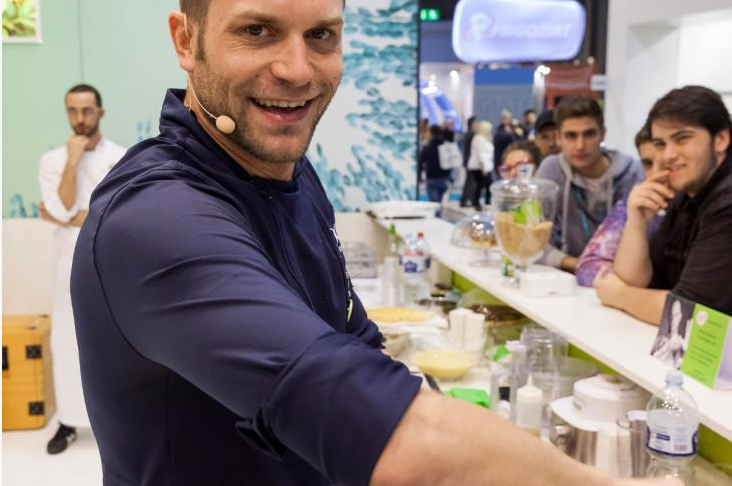
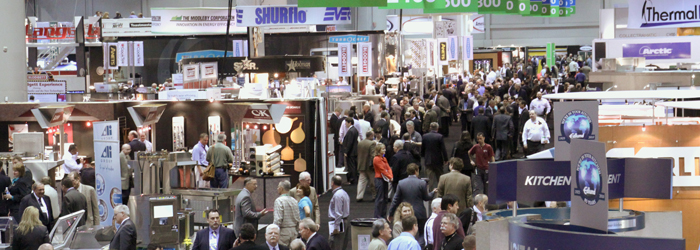

 RSS Feed
RSS Feed